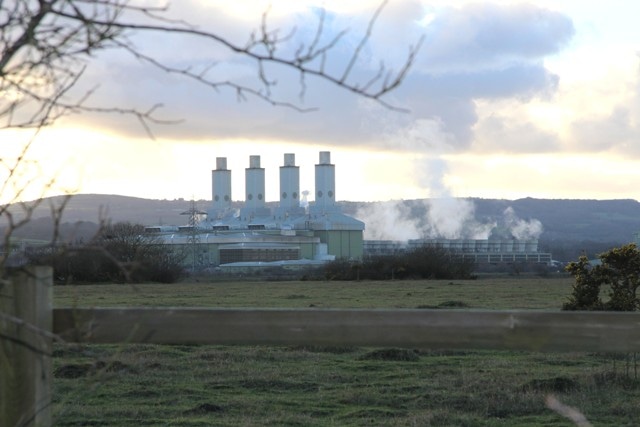Staff at Connah’s Quay Power Station have installed the latest luminescent optical dissolved oxygen (LDO) monitoring technology to minimise operational requirements whilst protecting the plant’s high value assets. An Orbisphere K1100 sensor from HACH now monitors DO continuously in the boiler water feed, requiring almost no maintenance or calibration.
 Connah’s Quay Power Station
Connah’s Quay Power Station
Background
Commissioned in 1996, Connah's Quay is a combined cycle gas turbine (CCGT) power station. It has four single shaft units, each with a capacity of 330MW giving Connah's Quay an overall generation capacity of 1420MW - enough to power half of Wales. Gas from Liverpool Bay is delivered straight to the site through a 27km pipeline from the Point of Ayr gas terminal. Cooling water is only abstracted and returned to the River Dee at specific times around full tide. Water for use in the plant’s turbines is supplied by Welsh Water.
Connah's Quay was originally constructed for base load generation. However, in recent years, changes in the UK’s energy sector have led to a significant change in the way the plant is managed. Power generation now changes on a daily basis in response to the needs of the network. “In the morning shift it may be necessary to operate one, two, three or all four of the units, but in the afternoon a different number maybe required,” explains Plant Chemist Bill Smith. “One of the consequences of this is a requirement for instrumentation with a faster response time, higher levels of reliability and lower controllable costs.”

HACH’s luminescent optical dissolved oxygen (LDO) monitoring technology
DO monitoring
Each of the plant’s four boilers is fed with water from an exchange water treatment plant. However, it is necessary for this water to be de-aerated along with pH control to prevent corrosion in the boilers and steam turbine. Following de-aeration continuous DO monitoring ensures that levels remain below a target of 10 ppb. Automatic alarms are generated in the control room if levels reach a limit of 20ppb.
Traditionally, online DO monitors have employed electrochemical sensors, and whilst these monitors are capable of providing accurate reliable data, they have a number of limitations in the current status due to long periods with no sample. These instruments employed membranes, anodes, cathodes, and electrolyte solutions that generally required a high degree of maintenance. These sensors actually consumed oxygen as part of the measurement process, so could not be left in stationary water. They can also suffer from drift, and as a result may have to be recalibrated more frequently. As a consequence of new operating periods and the problems associated with traditional sensors, the HACH optical DO monitoring systems have been an enormous success; becoming the technology of choice in a wide range of industries including Power, Water, Wastewater, Food and Beverage.
Conscious of the potential advantages of optical DO monitoring, Bill first tried a portable instrument from HACH; the Orbisphere 3100, which employs exactly the same luminescent dissolved oxygen measurement principle, and offers the same high resolution, stable, accurate measurements with a very low service requirement. “This enabled us to assess the performance of the technology, so that when the time came to replace one of the continuous monitors, we chose the Orbisphere 410 controller with a K1100 optical dissolved oxygen sensor, both from HACH.”
HACH optical DO technology
The sensor’s tip or ‘spot’ is coated with a luminescent material, called luminophore, which is excited by blue light from an internal LED. As the luminescent material relaxes it emits red light, and this luminescence is proportional to the dissolved oxygen present. The luminescence is measured both in terms of its maximum intensity and its decay time. An internal red LED provides a reference measurement before every reading to ensure that the sensor’s accuracy is maintained.
This technology does not consume oxygen; it does not suffer from drift; it does not require a membrane or electrolyte, and no chemicals are necessary for calibration. Instead, the spot is changed quickly and easily every year, and the sensor simply requires a quick zero point calibration once per year with an oxygen-free gas such as nitrogen.
Conclusion
In common with all power stations, Connah’s Quay Power Station continually searches for ways to improve efficiency, and Bill says: “The HACH optical DO monitoring system is a good example of how new technology is helping to meet the demands of a changing energy sector by lowering operational costs and improving response time, accuracy and reliability.” Looking forward, he adds: “As a result of these advantages, we plan to replace all of our DO monitors with the optical technology from HACH.”